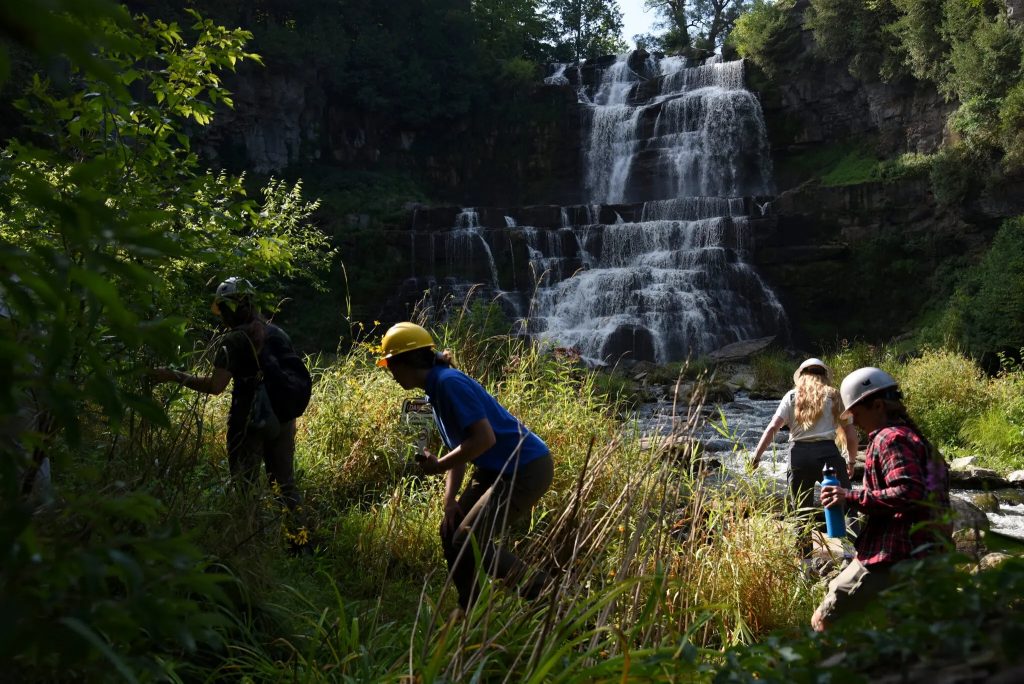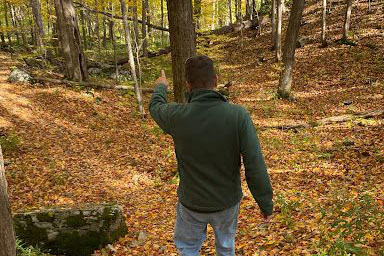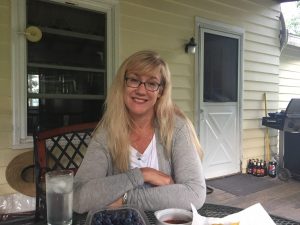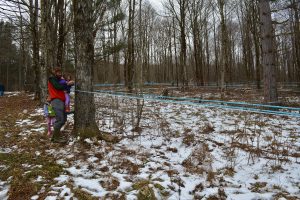FORCES brings college students to state parks
FORCES gives students chance to help state parks

Walk past Clark Reservation’s animal-themed playground and follow the trail down. While hiking over leaf covered trails, about one and a half miles in, on the edge of a cliff you’ll find a fern family. These American Hart’s Tongue Ferns are currently on the endangered species list, but they’re being protected by FORCES, Friends of Recreation, Conservation, and Environmental Stewardship.
The program started in 2008 to encourage volunteerism at New York State Parks. Since then, several hundred volunteers, including roughly 100 stewards or interns, have participated each year. According to program coordinator Amy Kochem, the stewards can volunteer at any NYS park but focus mainly on the parks in Central New York, the Finger Lakes, and Niagara.
Fern plant protection is just one of the current projects in the central region. Other projects include deer checks, weighing hunted deer, ecology education at Green Lakes State Park, and protecting the Chittenango Ovate Amber Snail, an endangered snail located only at Chittenango Falls State Park.
“We are an organization that’s under the New York State Park’s umbrella and also branching out into other state park agencies like the DEC,” Program Specialist Carlin Wakefield said. “We are an organization that is striving to connect college students and young professionals with opportunities in conservation fields at state parks or with the DEC.”
FORCES was founded and started by Tom Hughes, a Central New York regional biologist, who thought his workload was too much for one person.
“I reached out to SUNY ESF students and faculty that I already had a relationship with and said let’s make this into a thing,” Hughes said. “ I got all this awesome work to do, can’t do it alone; can we make something happen?”
FORCES engage with clubs on six different college campuses: LeMoyne College, Hartwick College, SUNY Oneonta, SUNY Geneseo, SUNY ESF, and Wells College.
The president of the SUNY ESF FORCES club, Gillian Smith, said the club is a path to connections.
“ESF FORCES bridges the connection between students and the FORCES community,” Smith said. “We connect students to internship opportunities, like stewardships and other volunteer opportunities with the New York State Parks.”

Not only are the clubs networking with state park staff, but the Department of Environmental Conservation started a branch of FORCES this year.
“I pitched the idea of FORCES to the central region office of the DEC about 10 years ago,” Hughes said. “They passed on the idea, but once the new director came in, he loved the idea and we went from no stewards to having seven, Gillian is one of them.”
Collaboration is another key feature of FORCES. As a steward and president of a FORCES club, Smith has been coordinating events within her club to encourage other members to be active within the FORCES program.
For instance, on Oct. 6-7, NYS Parks FORCES partnered with DEC FORCES to release ring-necked pheasants on a game farm near Ithaca. This partnership was done through networking of donors and current stewards.
“One of the donors of the FORCES program was really interested in that partnership and wanted to make an educational and stewardship-based event where we collect and release them with students and partners,” Wakefield said.
Kochem added that it’s important to make professional connections while in college for beneficial opportunities further down the line.
“As a program we try to connect with students to help them by networking and by participating in all these volunteer opportunities, but also make sure the parks are good places to go for the community and to learn about the species and wildlife there,” Smith said. “It’s a mutualistic relationship, but networking is a big part of it.”








